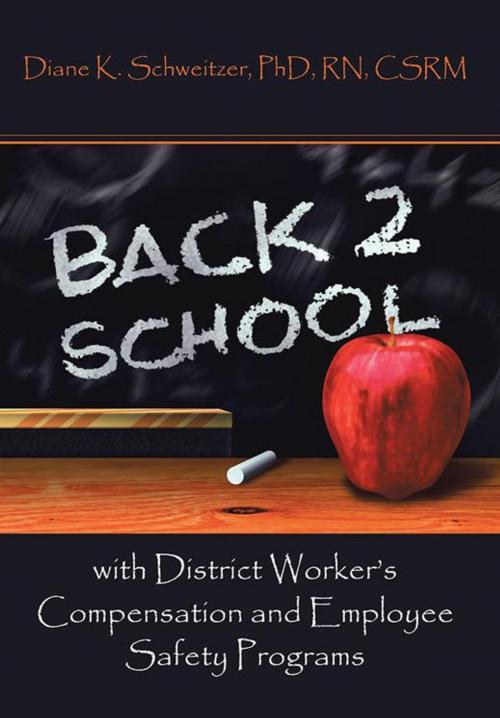Going Back to School with District Worker’S Compensation and Employee Safety Programs
Business & Finance, Business Reference, Nonfiction, Reference & Language, Education & Teaching| Author: | Diane K. Schweitzer PhD RN CSRM | ISBN: | 9781491806883 |
| Publisher: | AuthorHouse | Publication: | September 7, 2013 |
| Imprint: | AuthorHouse | Language: | English |
| Author: | Diane K. Schweitzer PhD RN CSRM |
| ISBN: | 9781491806883 |
| Publisher: | AuthorHouse |
| Publication: | September 7, 2013 |
| Imprint: | AuthorHouse |
| Language: | English |
When school administrators think of school safety, they frequently think of student safety and security. School district administrators need also to be concerned about the safety of all adult workers including certified and classified employees e.g. administrators, teachers, secretaries, custodians, foodservice workers, nurses, administrators, bus drivers, maintenance personnel and others. Losses from injuries to employees result in disruption of the educational process, lost days from work increased insurance premiums and consequent loss of funding for core educational initiatives. Injuries can diminish in frequency and severity or be avoided almost entirely if administrators implement health and safety systems. The cost of providing medical care to injured employees establishes baseline data on which worker compensation premiums are assessed. Administrators could reinvest costs saved in workers compensation insurance premiums into educational programs for the direct benefit of students. A comprehensive safety system that confirms administration commitment to a safe working environment assures management commitment as a legal and ethical responsibility, promotes employee involvement, pinpoints and eliminates potential hazards, and encourages employees to prevent potential harm to other employees, teaching staff, and students. This text focuses on developing a successful workers compensation program and safety system for school district employees. The models and strategies may be adapted for use in school districts for reducing school injuries. School district administrators are frequently forced to do more with less funding, particularly considering the requirement to implement many unfunded mandates from state and federal governments. Dollars saved from improved worker safety and reduction of insurance premiums may directly benefit educational initiatives in school districts. Primarily, the funds for educating students may originate from saved workers compensation dollars.
When school administrators think of school safety, they frequently think of student safety and security. School district administrators need also to be concerned about the safety of all adult workers including certified and classified employees e.g. administrators, teachers, secretaries, custodians, foodservice workers, nurses, administrators, bus drivers, maintenance personnel and others. Losses from injuries to employees result in disruption of the educational process, lost days from work increased insurance premiums and consequent loss of funding for core educational initiatives. Injuries can diminish in frequency and severity or be avoided almost entirely if administrators implement health and safety systems. The cost of providing medical care to injured employees establishes baseline data on which worker compensation premiums are assessed. Administrators could reinvest costs saved in workers compensation insurance premiums into educational programs for the direct benefit of students. A comprehensive safety system that confirms administration commitment to a safe working environment assures management commitment as a legal and ethical responsibility, promotes employee involvement, pinpoints and eliminates potential hazards, and encourages employees to prevent potential harm to other employees, teaching staff, and students. This text focuses on developing a successful workers compensation program and safety system for school district employees. The models and strategies may be adapted for use in school districts for reducing school injuries. School district administrators are frequently forced to do more with less funding, particularly considering the requirement to implement many unfunded mandates from state and federal governments. Dollars saved from improved worker safety and reduction of insurance premiums may directly benefit educational initiatives in school districts. Primarily, the funds for educating students may originate from saved workers compensation dollars.















